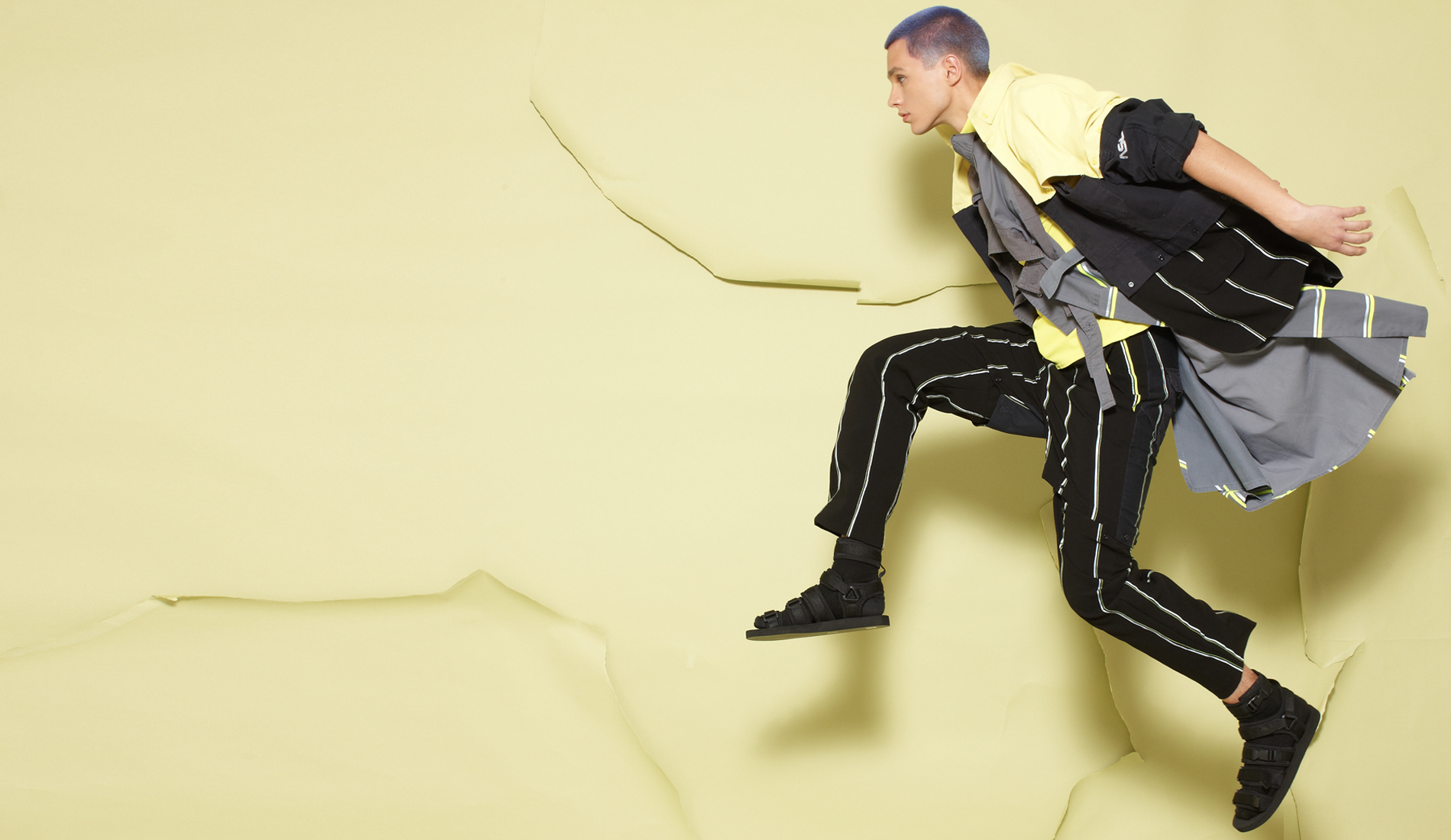

3D Business
Redress Design Award '19 Finalists

Redress Design Awards '19
The winner of the Redress Design Awards '19 will be announced on 5th September at the Grand Final of the Redress Design Awards. The 10 finalists will showcase their work at the awards, which for the first time this year features menswear, alongside womenswear and unisex collections.
The awards educate fledgling designers in sustainable design techniques in order to drive innovation towards a circular fashion system.
Here we showcase the talented ten finalists and their innovative sustainable designs.
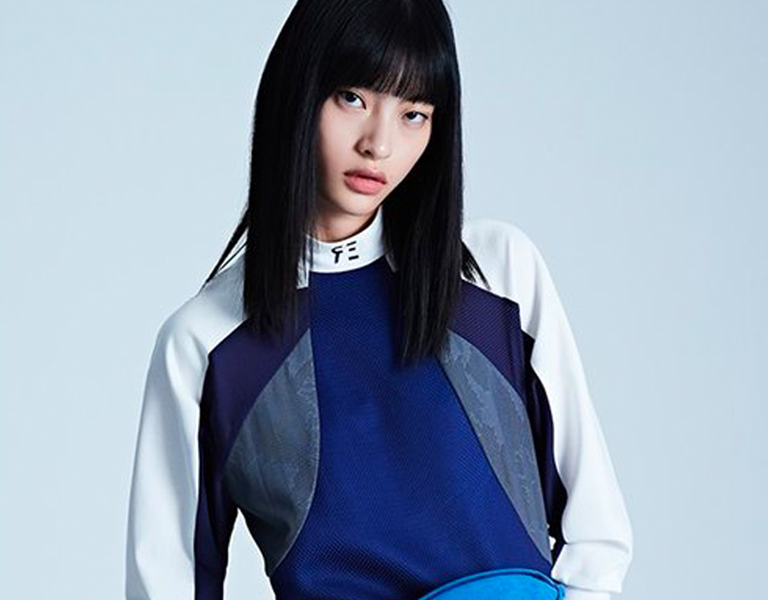
Redress Design Awards '19
The winner of the Redress Design Awards '19 will be announced on 5th September at the Grand Final of the Redress Design Awards. The 10 finalists will showcase their work at the awards, which for the first time this year features menswear, alongside womenswear and unisex collections.
The awards educate fledgling designers in sustainable design techniques in order to drive innovation towards a circular fashion system.
Here we showcase the talented ten finalists and their innovative sustainable designs.
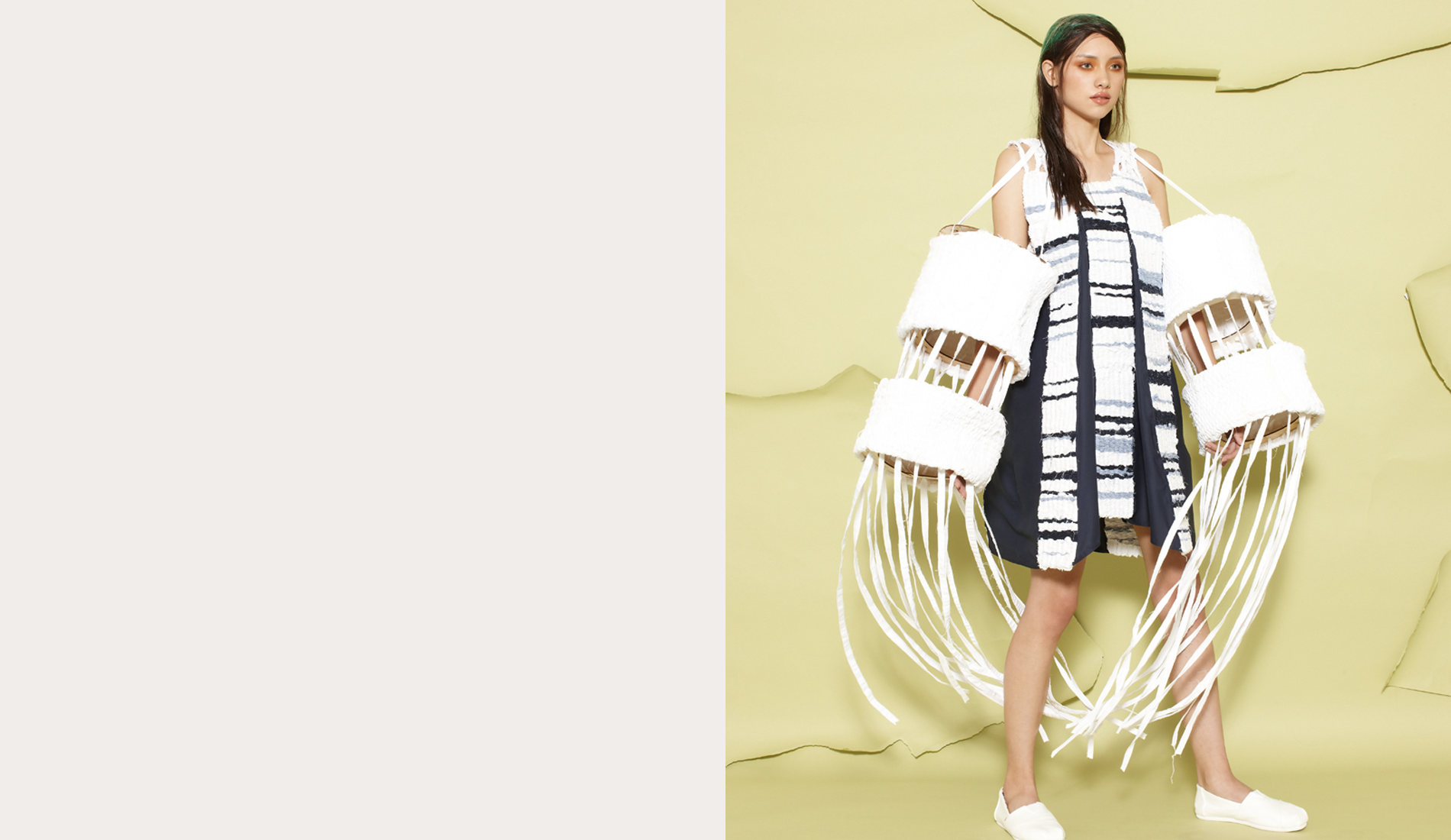
Abby Gaskin
Currently studying for a BFA at Parsons School for Design, Canadian student Abby Gaskin has created a zero waste collection entitled 'Indigo Blues', which connects simple rectangles through hand-knitting and handweaving. She has also upcycled bed sheets, secondhand textiles and surplus yarns. Her patterns are modular and can be disassembled and reassembled in different ways to extend the life of the garment.
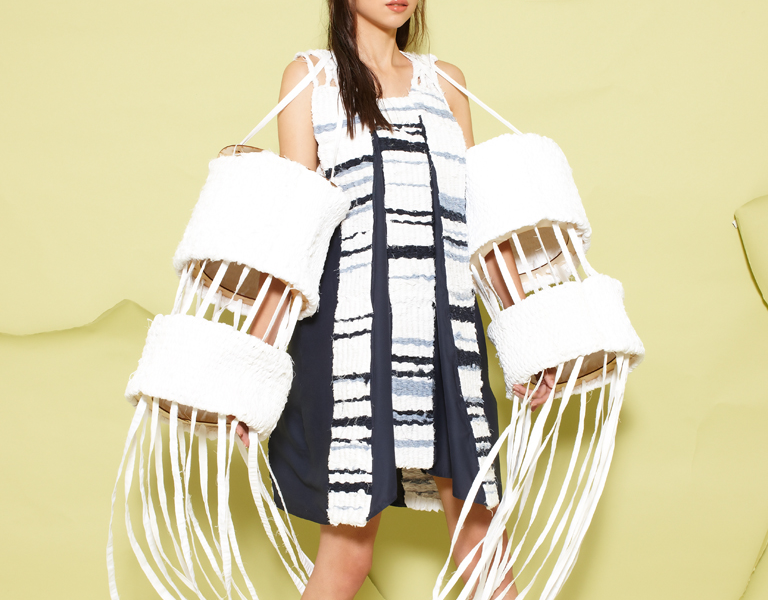
Abby Gaskin
Currently studying for a BFA at Parsons School for Design, Canadian student Abby Gaskin has created a zero waste collection entitled 'Indigo Blues', which connects simple rectangles through hand-knitting and handweaving. She has also upcycled bed sheets, secondhand textiles and surplus yarns. Her patterns are modular and can be disassembled and reassembled in different ways to extend the life of the garment.

Chan Meiyan
Hong Kong designer, Chan Meiyan has created a collection entitled 'Leftovers' made from reconstructed wedding dresses from China. Her collection features a reconstructed asymmetrical bra and lace bodysuit, upcycled from second-hand wedding dresses, under a skirt and length-adjustable wrap-around dress, both made entirely from Naia™ fabrics.
“There are approximately 10.6 million weddings every year in China. What if just 10% of those brides decided to donate their dresses for up-cycling? This would have a significant impact on the fashion industry’s carbon footprint”. Chan Meiyan
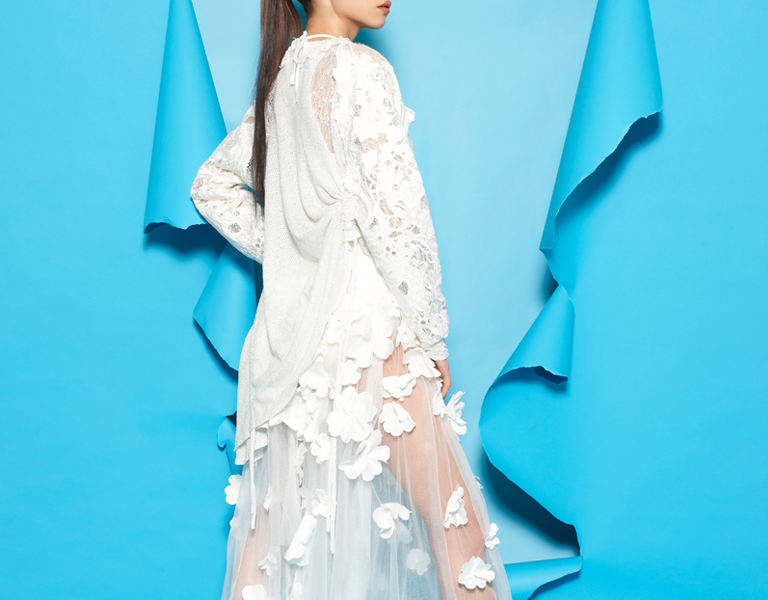
Chan Meiyan
Hong Kong designer, Chan Meiyan has created a collection entitled 'Leftovers' made from reconstructed wedding dresses from China. Her collection features a reconstructed asymmetrical bra and lace bodysuit, upcycled from second-hand wedding dresses, under a skirt and length-adjustable wrap-around dress, both made entirely from Naia™ fabrics.
“There are approximately 10.6 million weddings every year in China. What if just 10% of those brides decided to donate their dresses for up-cycling? This would have a significant impact on the fashion industry’s carbon footprint”. Chan Meiyan
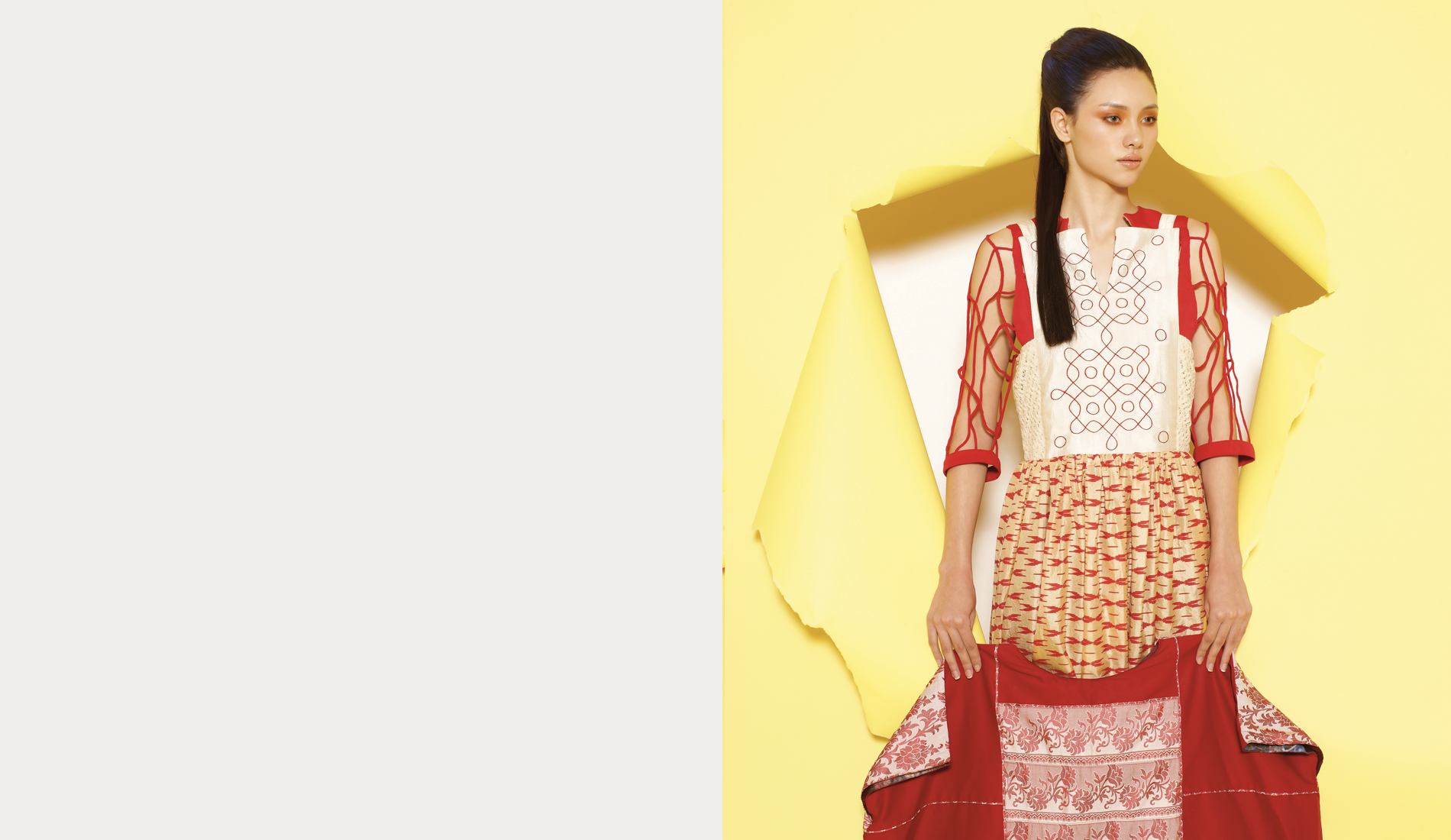
Damini Mittai
Hailing from India, designer Damini Mittai's collection 'Rangavalli' is inspired by the land's sacred status in Indian culture. She has upcycled a variety of waste textiles including cut-and-sew waste, second-hand and unsold clothing waste and surplus threads. Each garment is also reversible, offering versatility for the wearer.

Damini Mittai
Hailing from India, designer Damini Mittai's collection 'Rangavalli' is inspired by the land's sacred status in Indian culture. She has upcycled a variety of waste textiles including cut-and-sew waste, second-hand and unsold clothing waste and surplus threads. Each garment is also reversible, offering versatility for the wearer.

Moriah Ardila
Redress Design People's Choice Award winner, Moriah Ardila has created a collection entitled 'Home' that draws inspiration from outdoor living.
Her upcycled collection makes creative use of damaged camping equipment, such as sleeping bags and tents which are refashioned into garments that retain parts of their original function. Think trousers made from a second-hand tent, a backpack constructed from sleeping bags and trekking pants and a second-hand tent refashioned into an upcycled tunic.

Moriah Ardila
Redress Design People's Choice Award winner, Moriah Ardila has created a collection entitled 'Home' that draws inspiration from outdoor living.
Her upcycled collection makes creative use of damaged camping equipment, such as sleeping bags and tents which are refashioned into garments that retain parts of their original function. Think trousers made from a second-hand tent, a backpack constructed from sleeping bags and trekking pants and a second-hand tent refashioned into an upcycled tunic.
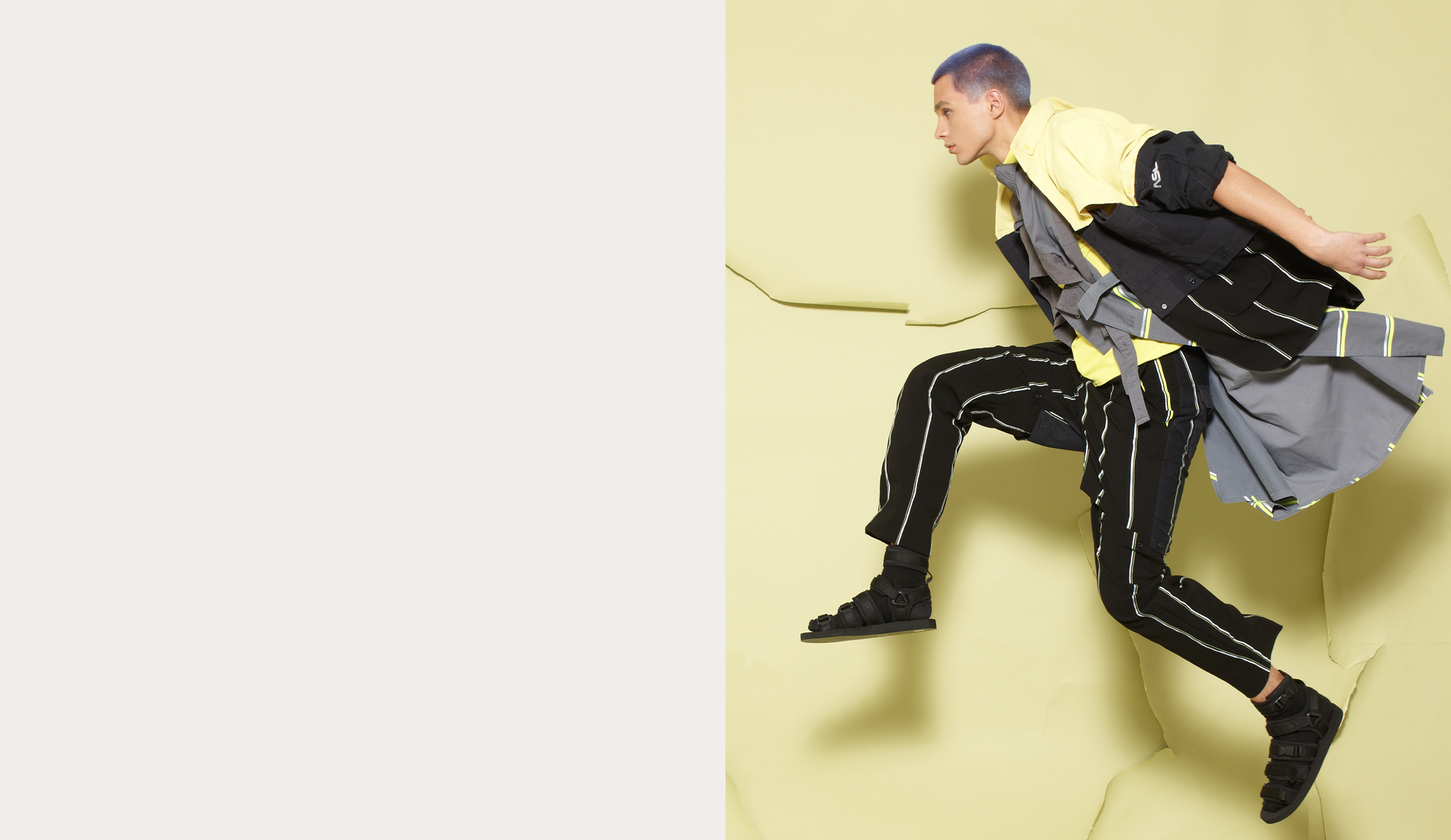
Natalie Tzur
For her Redress Design Award collection, 'Unireform', Israeli fashion sustainability student, Natalie, has transformed a prolific form of garment waste - uniforms - into an imaginative upcycled collection.
Trousers are created from upcyled factory worker's pants while a skirt attachment is made from firefighter uniforms. She has combined these quirky pieces with sustainably sourced Naia™ fabric, a partner of this year's awards.
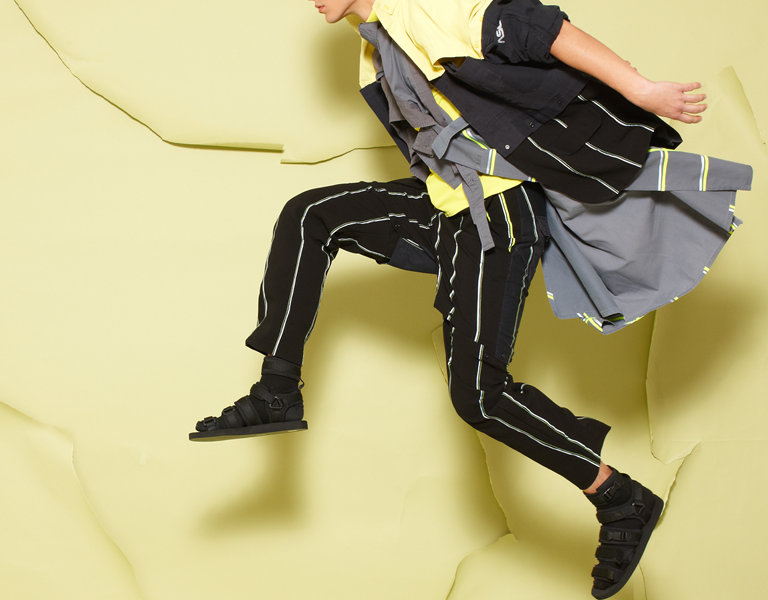
Natalie Tzur
For her Redress Design Award collection, 'Unireform', Israeli fashion sustainability student, Natalie, has transformed a prolific form of garment waste - uniforms - into an imaginative upcycled collection.
Trousers are created from upcyled factory worker's pants while a skirt attachment is made from firefighter uniforms. She has combined these quirky pieces with sustainably sourced Naia™ fabric, a partner of this year's awards.

Carina Roca Portella
For her 'Caution Line' collection, Spanish fashion student, Carina Roca Portella, has upcycled end-of-rolls, cut-and-sew waste and end-of-life restaurant textile waste.
A jumpsuit and trench coat are fashioned from napkins and tablecloths and printed using a sublimation technique with bold printed statements. Her garments also include care instructions to encourage wearers to keep their clothing in use for longer.
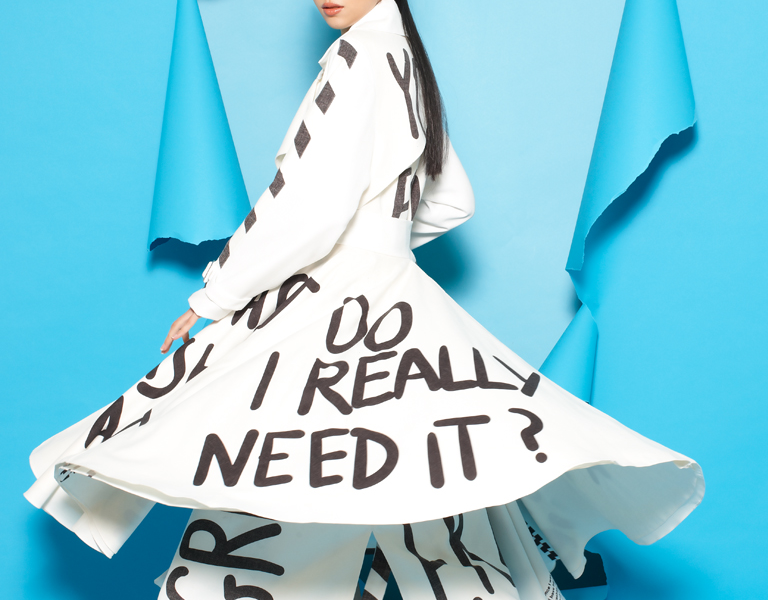
Carina Roca Portella
For her 'Caution Line' collection, Spanish fashion student, Carina Roca Portella, has upcycled end-of-rolls, cut-and-sew waste and end-of-life restaurant textile waste.
A jumpsuit and trench coat are fashioned from napkins and tablecloths and printed using a sublimation technique with bold printed statements. Her garments also include care instructions to encourage wearers to keep their clothing in use for longer.
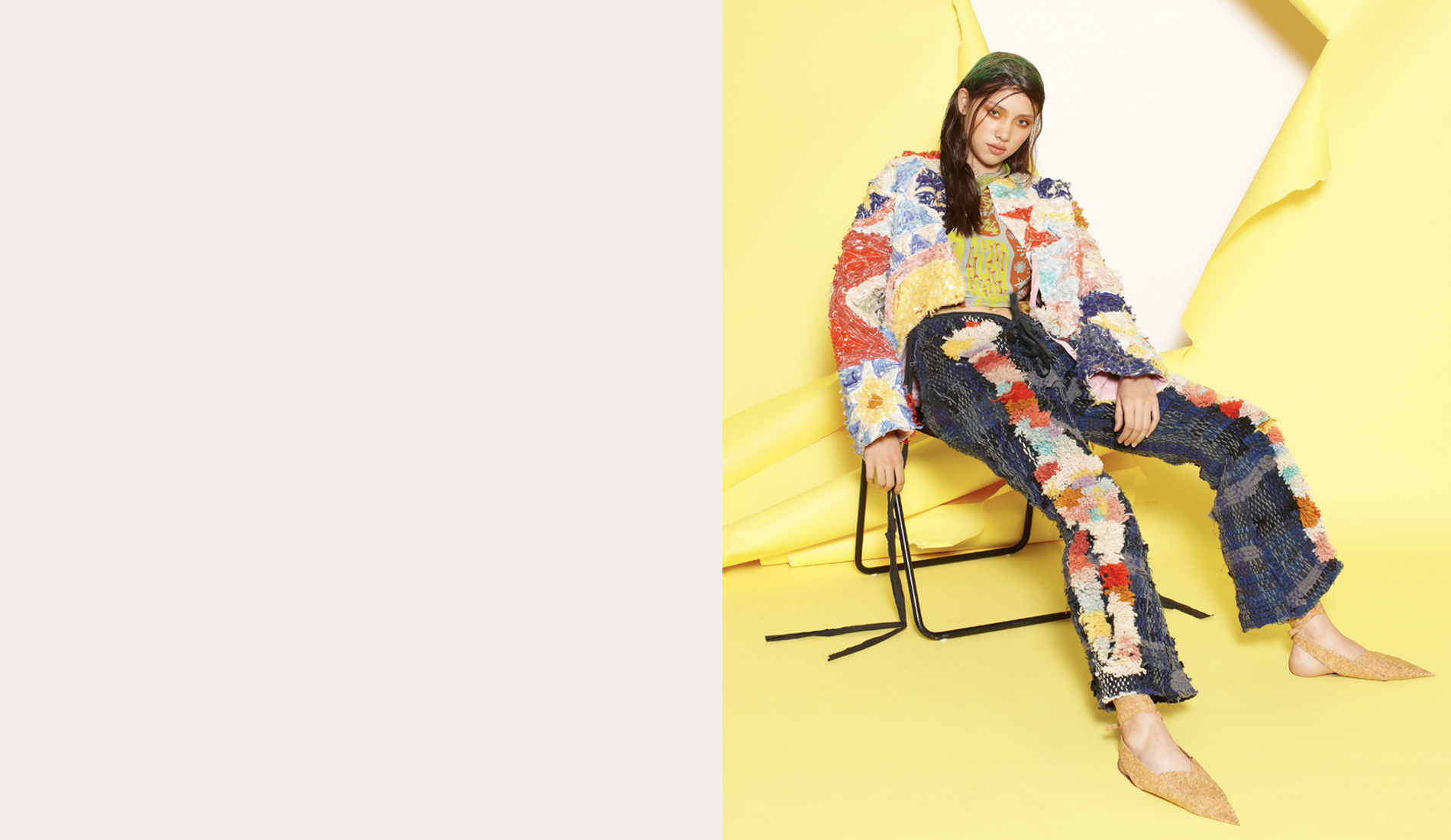
Maddie Williams
'The Mourners' is a collection by British designer Maddie Williams, that channels the loss of biodiversity and humanity into a collection made from reclaimed textiles, yarns and second-hand clothing.
A roll-neck top made from Naia™, a zero-waste woven jacket made from dead-stock clothing and pants constructed from post-consumer bedding and clothing are key pieces. Memento mori symbolism is worked into the textile and print designs, as a call-to-action and a reminder that time is running out for action against the climate emergency.
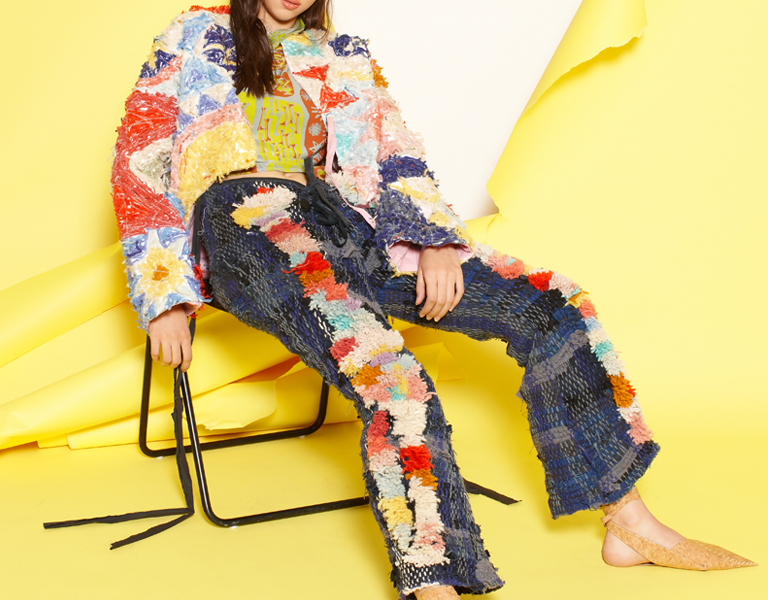
Maddie Williams
'The Mourners' is a collection by British designer Maddie Williams, that channels the loss of biodiversity and humanity into a collection made from reclaimed textiles, yarns and second-hand clothing.
A roll-neck top made from Naia™, a zero-waste woven jacket made from dead-stock clothing and pants constructed from post-consumer bedding and clothing are key pieces. Memento mori symbolism is worked into the textile and print designs, as a call-to-action and a reminder that time is running out for action against the climate emergency.

Anna Schuster
German designer, Anna Schuster has created a collection that applies zero waste as well as upcycling techniques to transform surplus, damaged and stained textile waste and yarns into a contemporary menswear collection. A trouser belt features watch pieces in the fastener while trousers are constructed from leftover fabric and waste garments. She also incorporates craft skills from crochet to repair and patchworking.
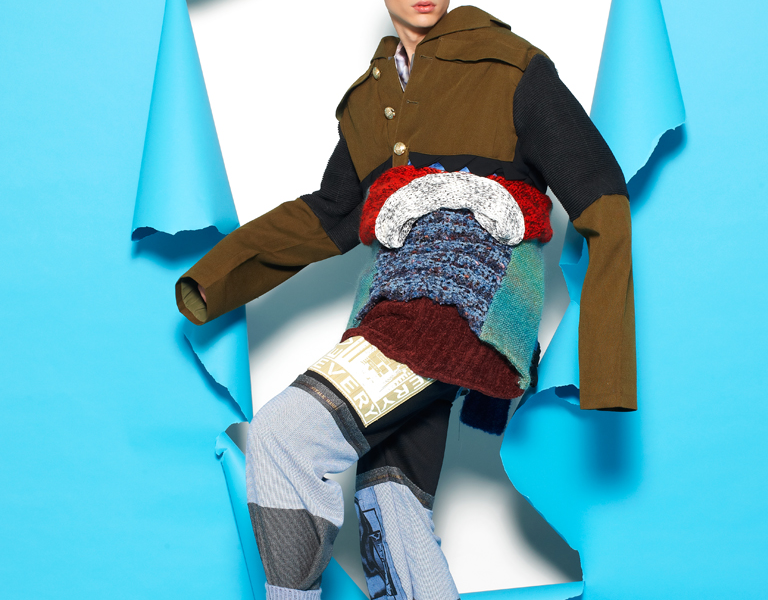
Anna Schuster
German designer, Anna Schuster has created a collection that applies zero waste as well as upcycling techniques to transform surplus, damaged and stained textile waste and yarns into a contemporary menswear collection. A trouser belt features watch pieces in the fastener while trousers are constructed from leftover fabric and waste garments. She also incorporates craft skills from crochet to repair and patchworking.
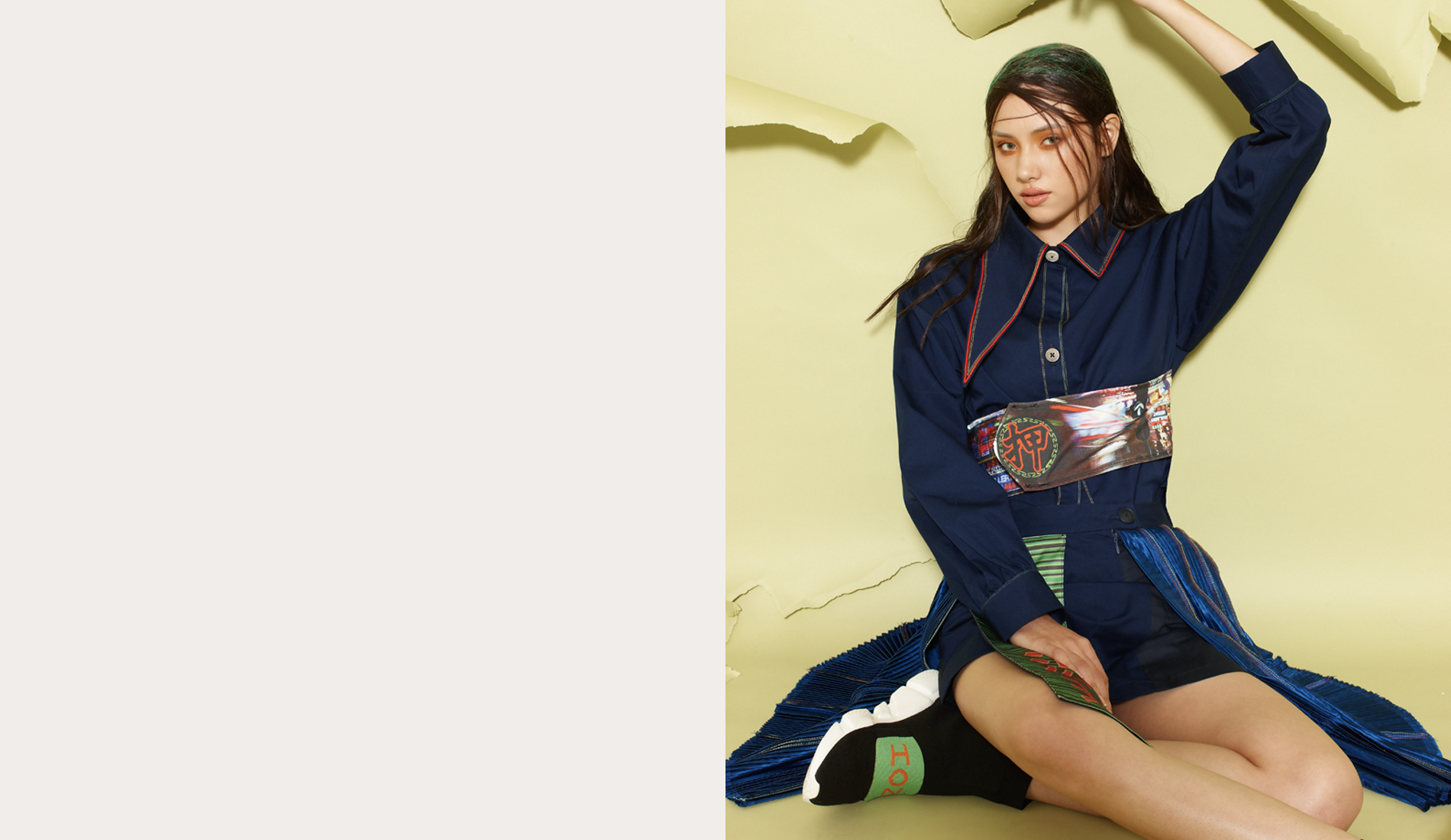
Chan Jianfeng
Hong Kong designer Chan Jianfeng brings the signature neon signs of his city to life through his creative use of colour, end-of-roll fabrics, fabric scraps and second-hand clothing. The result is a layered, asymmetric collection emblazoned with typography using eco-friendly inks and embroidery, echoing the colourful nightscape of this iconic city.
Key pieces include a zero waste jacket with asymmetrical collar made from end-of-roll fabric and a zero waste skirt made from Naia™ fabric.
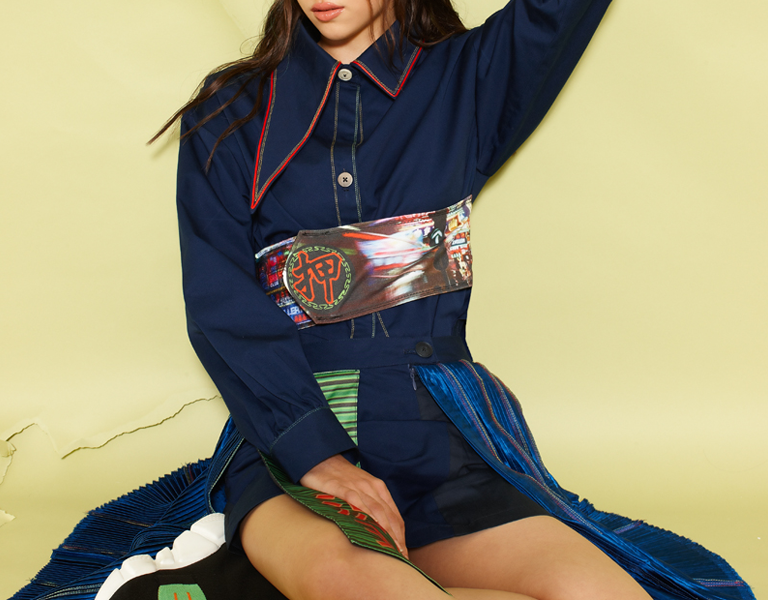
Chan Jianfeng
Hong Kong designer Chan Jianfeng brings the signature neon signs of his city to life through his creative use of colour, end-of-roll fabrics, fabric scraps and second-hand clothing. The result is a layered, asymmetric collection emblazoned with typography using eco-friendly inks and embroidery, echoing the colourful nightscape of this iconic city.
Key pieces include a zero waste jacket with asymmetrical collar made from end-of-roll fabric and a zero waste skirt made from Naia™ fabric.

Julia English
Australian designer, Julia English's 'Worn Well' collection of oversized, layered pieces aim to engage the wearer as a co-creator, allowing them to adjust the garment in order to promote emotional attachment and increase its functionality and longevity.
Applying upcycling, reconstruction and zero waste techniques to textile waste and second-hand clothing, English's range includes an oversized tank top crocheted from cut-and-sew dress waste and a jacket crafted from pre-consumer waste.
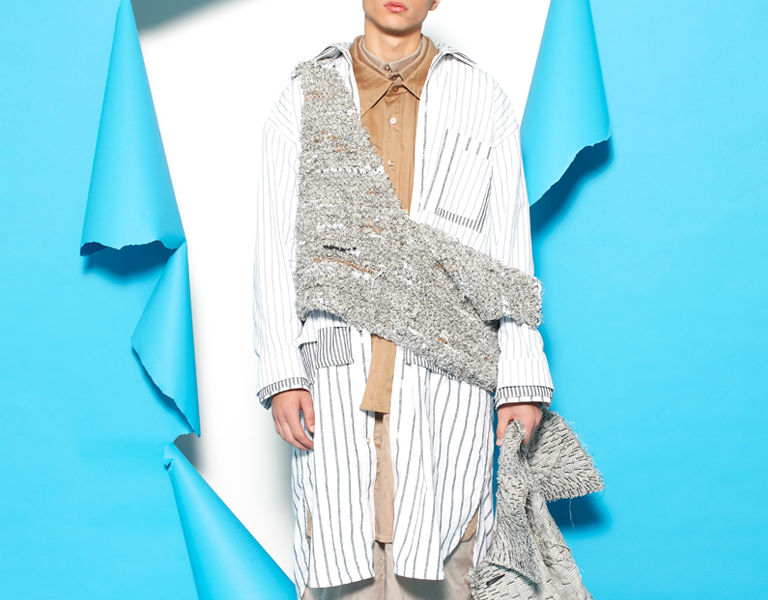
Julia English
Australian designer, Julia English's 'Worn Well' collection of oversized, layered pieces aim to engage the wearer as a co-creator, allowing them to adjust the garment in order to promote emotional attachment and increase its functionality and longevity.
Applying upcycling, reconstruction and zero waste techniques to textile waste and second-hand clothing, English's range includes an oversized tank top crocheted from cut-and-sew dress waste and a jacket crafted from pre-consumer waste.


Related Reading
Sign up to connect with 50,000+ other sustainability-minded professionals and access over 300 pieces of actionable intelligence.
Common Objective is a global sourcing and information network that enables you to succeed in sustainable fashion business.
